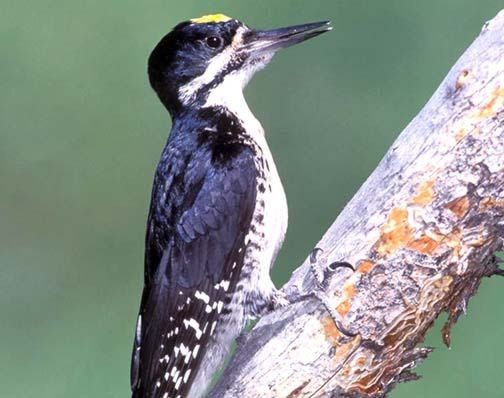Daryl Calder
In addition to Birds, naturalists are interested in a wide variety topics pertaining to nature.
The range of themes include Physiology and Geology, Weather and Climate, Ecology and Botany. Insects, Fishes, Reptiles and Amphibians as well as Mammals can be observed and studied directly.
Recreation and Night Sky are not to be overlooked!
The Rocky Mountain Naturalists want to know about everything natural in the East Kootenay. We organize regular hikes, snowshoe and bike trips, friendly competitions and guest presenters to help us discover and understand the wealth of experience in our corner of the province. Of course, whenever we are outdoors deciphering animal tracks in the snow or contemplating ‘sun dogs’ in the sky, the sight and sound of wild birds catch our attention.
Volunteer citizen scientists have now completed the 115th annual Christmas Bird Count. The information they collect not only keeps track of birds, but it helps monitor the state of our environment.
The bird count isn’t so much a census of birds as it is a gauge of how birds and the environment are doing.
Comparing one year’s count with another, gives an indication of trends in bird populations. A drastic drop in numbers of one species can be a warning that something is amiss, prompting further studies and action.
Many of those involved with the Christmas count are enthusiastic birders with a range of expertise. Some have recently discovered wild birds by watching their feeders, while others have enjoyed the lifelong hobby and its rewards.
Fernie, Elkford, Cranbrook and Kimberley organized counts again this year. The weather was cooperative and participants observed the dozens of species which are capable of wintering in the East Kootenay. It was a relief to see the return of many of the winter finches; seed eating birds which live in the northern forests and often visit feeders.
In Cranbrook, on Dec. 20, 15 field counters met at Elizabeth Lake, a mild, overcast day. We formed groups and searched each of the four pre-determined quadrants. We quietly hopped out of the vehicle whenever there was a safe spot with bird action, reminding each other which species might prefer the habitat at hand.
Sometimes it seemed no birds were present; but often several new species would suddenly be found in a particular spot.
The Cranbrook area has a wide variety of habitats; we attempted to visit all of them without spending too much time in one area.
Flat light adds to the challenge of making a quick, accurate identification. Some birds don’t say much either, as they would in the spring or summer. We had to rely on observations of perching posture, flight characteristics, number of birds in a group and foraging behaviour in order to narrow down the possibilities.
After the count-up that evening, and in comparison with tallies dating back 31 years, some statistics became obvious. We counted an impressive 46 species, not including five more which were seen during ‘count week’. This represents a little over half of the species which have been observed in all previous counts. Seven species were present in numbers which equalled or exceeded previous count records. These include 389 Mallards, 37 Buffleheads, 1 Common Loon, 12 Grey Jays, 25 Blue Jays, 6 Chestnut-backed Chickadees and 181 European Starlings.
One little bird provided lots of evidence that he was feeding on bark beetles around Cranbrook. Often we saw standing larch and yellow pine trees whose stems were brighter and redder than their healthy neighbours.
We suspected that some type of woodpecker was searching for dying trees and flaking off the outer bark in order to find food. It wasn’t until the late afternoon of the Kimberly count on January 4 that we finally solved the puzzle. In this case ‘he’ was a female Black-backed Woodpecker, a rare, year-round bird. This bird is named for its entirely glossy black upperparts, which camouflage it against the burnt bark of the trees it typically inhabits. It moves from place to place following outbreaks of wood-boring beetles. The more common Hairy Woodpecker has more white on the head, neck and back; the Black-backed male has a fine yellow cap.
During the non-breeding season, individuals may move south of the normal breeding range. Movements may be just a few wandering individuals or irruptions involving many birds. Irruptions have been attributed to a lack of wood-boring insect prey on their normal range or to overpopulation following an insect outbreak.
This bird is considered a species of special concern in some areas. Because of low densities and the ephemeral nature of it’s preferred habitat, true population estimates are difficult to obtain.
Here is the species list for the Cranbrook count; watch for the Kimberley results next week.
The List
• Common Loon
• Hooded Merganser
• Canada Goose
• Mallard
• Green-winged Teal
• Bufflehead
• Common Goldeneye
• Bald Eagle
• Northern Goshawk
• Red-tailed Hawk
• American Kestrel
• Merlin
• Rock Pigeon
• Eurasian Collared-Dove
• Mourning Dove
• Northern Pygmy Owl
• Belted Kingfisher
• Downy Woodpecker
• Hairy Woodpecker
• Pileated Woodpecker
• Northern Flicker
• Northern Shrike
• Grey Jay
• Steller’s Jay
• Blue Jay
• Clark’s Nutcracker
• Black-billed Magpie
• American Crow
• Common Raven
• Black-capped Chickadee
• Mountain Chickadee
• Chestnut-backed Chickadee
• Red-breasted Nuthatch
• White-breasted Nuthatch
• Brown Creeper
• American Dipper
• Golden-crowned Kinglet
• Townsend’s Solitaire
• American Robin
• European Starling
• Bohemian Waxwing
• Song Sparrow
• Dark-eyed Junco
• Pine Grosbeak
• House Finch
• Red Crossbill
• Common Redpoll
• Pine Siskin
• American Goldfinch
• Evening Grosbeak
• House Sparrow
Submitted by Daryl Calder on behalf of Rocky Mountain Naturalists. To find more detailed information, search www.rockymountainnaturalists.org
